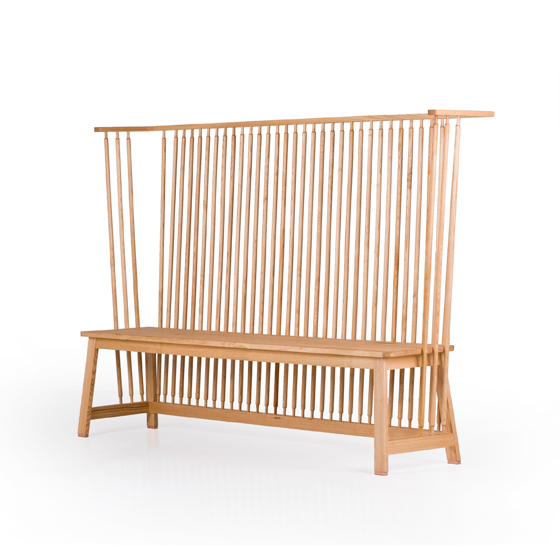The Milan Conversations: Part III – Ilse Crawford and Omer Arbel
Texte par Simon Keane-Cowell
Zürich, Suisse
11.05.10
The Milan Conversations – a series of discussions held at this year's Salone del Mobile with some of the most celebrated designers working internationally – continues with thought-provoking exchange with Ilse Crawford and Omer Arbel.
Milan during 'that week in April' offers a surfeit of visual impressions, but sadly, in terms of time, little opportunity to engage with anything in a truly meaningful way, which is why Architonic was delighted to get the chance to talk at length to designers Ilse Crawford and Omer Abel.
Omer Arbel's '28' light installation at the Spazio Rosanna Orlandi, during 2010 Milan Salone del Mobile
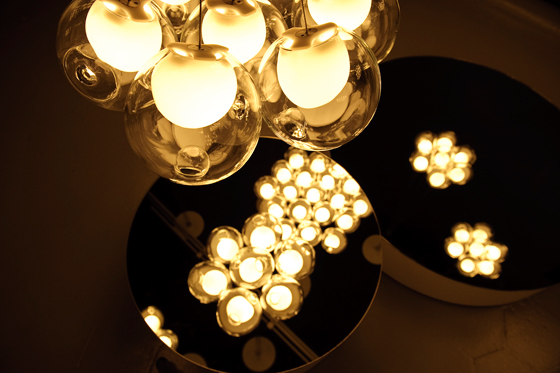
Omer Arbel's '28' light installation at the Spazio Rosanna Orlandi, during 2010 Milan Salone del Mobile
×Founder of design company Studioilse and head of the Department of Man and Well-Being at the esteemed Design Academy Eindhoven, Ilse Crawford creates work that is underpinned by the notion of design as a means for change and revitalisation. Intelligence and emotion inform her approach. Architonic caught up with her at the Eindhoven '?' show in Milan's new Ventura Lambrate design district, which featured responses by students to a number of critical questions about the role of design and the designer in contemporary society.
Renowned architect and designer Omer Arbel, who established OAO (Omer Arbel Office) in Vancouver in 2003, is, among other things, creative director of Canadian manufacturing and design company Bocci. His collaboration with the company has produced a series of unique lighting projects that use technical innovation to produce a striking romantic aesthetic, but which also encourage us to think about our all-too-casual relationship with objects.
.....
ILSE CRAWFORD – 'Design, ultimately, is 3-D philosophy'
The questions posed in this show are fascinating, as are the responses. What I love is that someone has posted a question on the back wall, which is 'Why aren't I studying at Eindhoven?'
(Laughs.) Well, why not? Because everyone thinks that Eindhoven is some incredibly fancy, expensive school. But it's a state school. 30% of the students are local from Brabant. 30% are from Holland in general. And, more or less, 30% are international. No one realises that it's just a normal school.
Ilse Crawford: 'Things that have been designed with clarity, usability and humanity in mind can work for everybody in a fabulous way'; photo David Lunberg for Artek
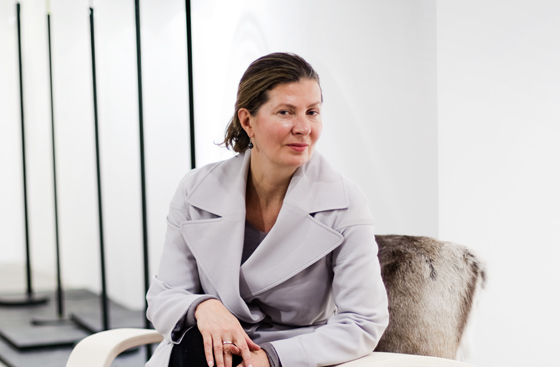
Ilse Crawford: 'Things that have been designed with clarity, usability and humanity in mind can work for everybody in a fabulous way'; photo David Lunberg for Artek
×And does the demographic of the students affect the way that teaching happens?
Well, the thing that's unique about the school in Holland is that it's taught in English. For the Dutch to launch themselves into the world in design, it's fact that you need to be able to speak English. I would think that in many ways, the course is international in that the basic thinking of the school is the same as the basic thinking of the Dutch constitution, which is this belief in the autonomous individual and the belief that education is about creating the conditions for individual talent to flourish, so therefore it's a tolerant and responsive system.
I love the name of the department in which you work – Man and Well-Being. The notion of well-being as an aspect of design and design culture is so needed, I think, particularly in this age of the rapid consumption of mass-produced objects. Design that looks after its users and makes them feel good can only be a good thing.
Yes. Some people find the term 'well-being' a bit soppy. I'm sorry, but we live in a society that doesn't take well-being seriously. Obviously, we're in a wonderful bubble here in Milan, but there are many areas in which well-being needs to be addressed. We did a project in the department with the funeral industry in Holland. There was a bit of 'You shouldn't be doing that with young people', but it was probably the project they loved the most, looking at the lack of humanity in that industry and how to make it more relevant to a world where the religious side is perhaps less important but the humanity is really important, and how we really ignore the process of grief and therefore make it really hard for us, both in terms of coming to terms with our own mortality, but also in dealing with it when it happens to the people we really care about.
'Hair Brush' project by Lea Haefliger, presented at Design Academy Eindhoven's '?' show in Milan's Ventura Lambrate design district during this year's Salone del Mobile; photo Joost Govers
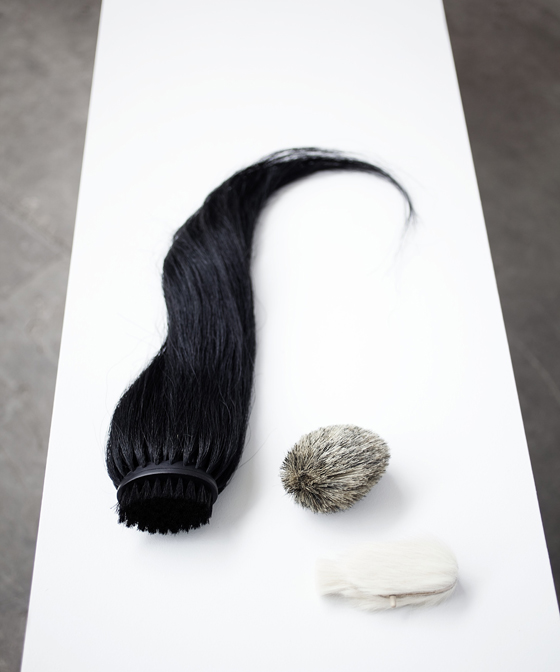
'Hair Brush' project by Lea Haefliger, presented at Design Academy Eindhoven's '?' show in Milan's Ventura Lambrate design district during this year's Salone del Mobile; photo Joost Govers
×Death seems to be something we just don't want to countenance in contemporary society. Its inevitability. It was certainly more accepted – death as part of life – in the past.
And it still is in some cultures. The Jewish culture still addresses death in a series of quite brilliant rituals, but particularly in Western Europe and America it's gone completely the other way. 'Pull your socks up. Get on with it. Come on.'
Maybe it has something to do with late capitalism.
Certainly. 'Get back to your machine.' Time is money. But how can we live our lives well if we don't know our parameters. We need to have a sense of our own time, because otherwise we don't make of it what we should.
There is a history of a material culture of that – like the momento mori – which has disappeared from contemporary Western society.
We're supposed to be able to buy ourselves out of it. Anti-ageing cream and so on.
'Dimensions' project by Steie van Vught, presented at Design Academy Eindhoven's '?' show in Milan's Ventura Lambrate design district during this year's Salone del Mobile; photo Rene van der Hulst
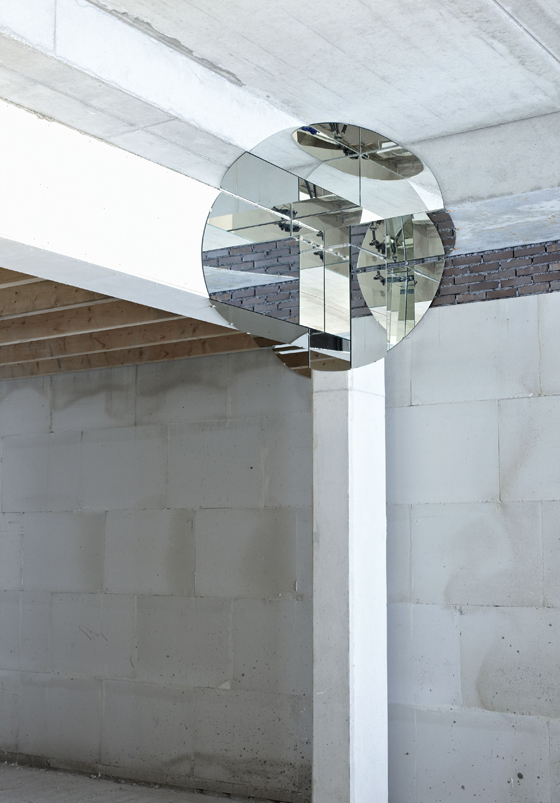
'Dimensions' project by Steie van Vught, presented at Design Academy Eindhoven's '?' show in Milan's Ventura Lambrate design district during this year's Salone del Mobile; photo Rene van der Hulst
×Exactly. And old age is part of that process of one's life passing and finally coming to an end and again we're in denial about that, which is why I think the work of somewhere like the Helen Hamlyn Institute in London is so important.
Absolutely. Things that have been designed with clarity and usability in mind can work for everybody in a fabulous way. We have to understand that you don't just have crappy categories for people aren't supposedly at the front of the queue and lovely things for those who can afford them. That's madness. Everything should be given the same attention. So many areas of life are anonymous to us. I think anonymity is the root of all evil, in fact.
I think design, ultimately, is in a way 3-D philosophy, because what you build embodies the ideas and the ethics that we live by. For better or for worse, it does. When you go to Heathrow Airport, what does it say? Basically, that we don't care about people very much at all. You go to Copenhagen Airport and it says we are society that cares about people. The scale is nice, it's rather intimate. There's a humane feeling about it.
And it's mutually informing. Ill-considered design has a real affective effect on people...
It changes the way we behave.
...and people create bad design in the first place.
There was that project about light in New York. There's that whole story around how light in the city moved from illuminating dark places to a matter of regulating and owning space. And that was the point, ironically, at which vandalism kicked in. There was a project in the Lower East Side where lighting was installed very much in collaboration with local residents. Beautiful lights were put in in areas that were felt important and other areas were left dark. Apparently, the lights haven't be damaged at all. The area is loved and cared for because it's not about some weird form of control.
It reminds me of the project in Holland where road markings were removed, the result being safer driving.
Yes, because you're aware of other people. Instead of following the rules or breaking the rules. Humans are created to live together, to be responsive to each other. The minute you start ignoring each other, then you end up with confrontation. You look at historically at all the terrible cases of people being pitched against each other, and you do it by separating them. The British Empire was monstrous at that.
'446' solid-chestnut settle by Ilse Crawford for De La Espada
Speaking of keeping people apart, your new work for De La Espada seems to do the opposite. It has a very warm, communal feeling about it. You get a real sense sitting in the high-backed settle of being enclosed, of being cosseted.
Well, I'm part of a big family and I love the idea of furniture that brings you together. We always had people around and we always used to sit on the bench. That was the thing. We all wanted to sit on the bench, because you could all squish up and it was really jolly. Whereas I think chairs separate. Nowhere more than in the board room, where people jostle for position. And the high back gives you that sense of enclosure that I think humans really like. It's just primal. I love to play with that.
And there's a chance that if you create furniture that that brings people together, produces an atmosphere of warmth, it'll be held onto for longer.
Thanks my take on sustainability. If you make sustainable things that are thrown away – that's not sustainable. Making things that you don't love or want – that's not sustainable.
'443' solid-chestnut bench with natural-leather pad by Ilse Crawford for De La Espada
Precisely. An object's recycled content or the amount of energy used in its production is fairly irrelevant. If you're going to throw it away, you're going to throw it away.
And we all know how much energy is involved in recycling, so no. It's about having a different relationship with what you buy. Thinking of ways we evolve our world, rather than this radical 'everything out, everything in'. We're ongoing stories, we develop. But we need to keep some of ourselves as we develop. Development as an ongoing story rather than 'out with the old, in with the new', which is psychotic in fact if you look at in psychological terms. How many personalities can you collect over your life?
I think that, ultimately, an object has to be loved. It has to be worth making in the first place. Consumerism can, on one level, be a good thing. It can be a fabulous exchange of ideas. It's just bringing content into the mix.
Thanks very much for your time, Ilse. It's been fascinating.
.....
OMER ARBEL – 'The object is a profound companion'
I was interviewing some Israeli designers yesterday about what informs their work and what their aspirations are professionally. You left Israel a long time ago.
I left when I was quite young. I don't really consider myself an Israeli designer. If we're going to look at it that way, I don't even want to be considered a Canadian designer.
Omer Arbel: 'Objects move in and out of our lives in a casual way that doesn't reflect any kind of thoughtfulness'
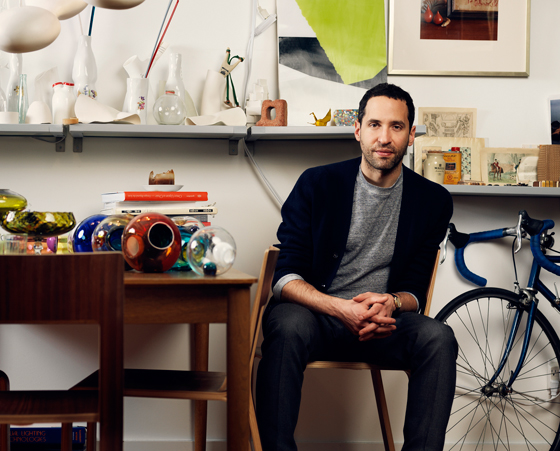
Omer Arbel: 'Objects move in and out of our lives in a casual way that doesn't reflect any kind of thoughtfulness'
×Does national identity inflect your work at all, do you think?
Not really. At least not in a conscious way. To a certain extent, everyone is a product of the circumstances that brought them to where they are.
What is at stake in your work, would you say?
I'm very interested in the idea of the romantic project. When you think about the romantic project in literature or art, it's exciting. That's something I find fruitful to think about. To apply the idea of romanticism to industrial design.
You see that very clearly in this project. There's a certain kind of delight. What I find particularly fascinating about it is the idea of sameness and difference. You have this multiple of pieces that are similar but each one is individual. And that's quite special when you think about the context of industrial design. The idea of standardisation.
That's right. It's a theme that runs throughout my work. I guess it comes from a critique. I'm really horrified by the consumptive of our culture. The way we consume objects. I live in North America. It's a culture that consumes objects in a very irresponsible way. Objects move in and out of our lives in a casual way that doesn't reflect any kind of thoughtfulness. I have a real problem with it, especially as an industrial designer and an architect. It's something I've struggled with.
How does one go about resolving that tension, would you say?
I guess what I've starting thinking about is the romantic, pre-Industrial-Revolution understanding of objects. I read that in pre-Industrial-Revolution France, an average person owned in their entire lifetime less than 100 objects. That's a beautiful idea. If you start thinking about that it means to spend a lifetime with only 100 things. Each one of them is useful, more than likely inherited, useful, carries emotional associations, well-made, has all these stories associated with it that stretch back generations. The object is a profound companion. It's a companion in someone's life. And to start thinking about objects in that way is to me healthy.
Omer Arbel's '28' light installation at the Spazio Rosanna Orlandi, during 2010 Milan Salone del Mobile
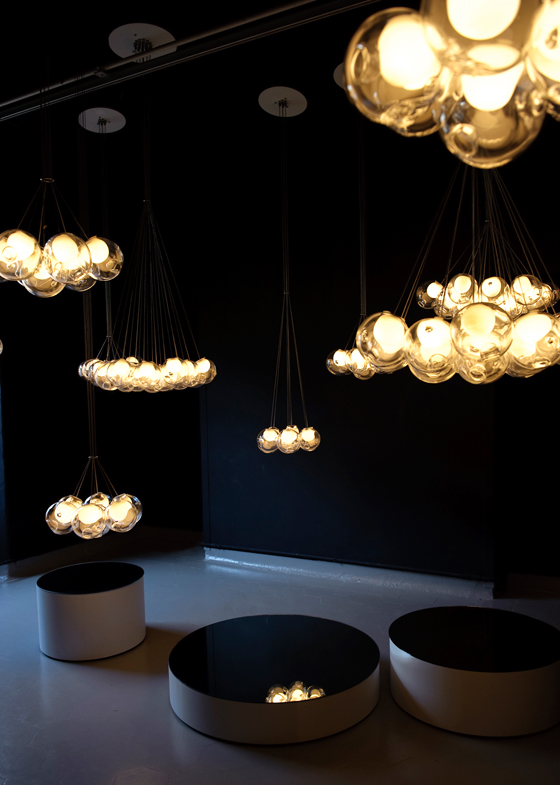
Omer Arbel's '28' light installation at the Spazio Rosanna Orlandi, during 2010 Milan Salone del Mobile
×That's a really interesting way to think about things – about things, literally.
The next question is how do we encourage a consumer to bring that level of rigour to the decision-making process? 'What am I going to buy? What kind of light am I going to have on my table? What kind of sweater shall I choose?' How do we make those material decisions less casual? For me, mass production is on a certain level a problem, because no matter how expensive or how well-made a piece is, it's still exactly the same as the one next to it on the assembly time. A way that my work tries to resist the consumptive nature of our culture's relationship to objects is by introducing variations into the manufacturing process, such that every piece is on some level unique.
And how do you go about that?
Well, instead of designing form, which is what most industrial design is focused on, we design systems that make form. We design a set of parameters, a technique and a process, and that process yields results that have variation built into them.
Endless permutations of form within those defined parameters.
Exactly. In this case, it's a process that we worked on which is an experimentation. We have an amazing glass atelier in Vancouver and, of course, glass has been blown for thousands of years; there's very little innovation you can contemplate. But we found a way. Conventionally air is blown into a glass matrix, which is then manipulated in various ways to make form. What we started doing is experimenting with two parameters – what happens when the glass cools, and the idea of pushing air into a piece, because the logic follows that you should be able to pull air out of a piece as well to create a vacuum, a void. And that's very exciting because all of a sudden you have these forms that appear on their own. Without any kind of prescriptive hand of the designer. It sounds simple, but it took a very long time to perfect. All kinds of tools.
How long did it take?
A process of four months, with three people working on it full time. Inventing tools. We have an unbelievable set of them now that I don't think anyone else has.
Series '14' pendant lights by Omer Arbel for Bocci
How do you decide what to do with the forms once you have them?
I don't know if I can describe what happens next. It's mysterious. You have these shapes, so then you ask 'How big should they be?', 'How do we cluster them together?', 'How do they interact with light?', 'How are the suspended?' I guess I start having intuitive responses to these questions. At a certain point it no longer follows any rational trajectory. It's also emotional. The piece evokes emotions in a mysterious way. People respond to the piece in an emotional way.
I think that the idea of designed objects that have a very strong emotional valence is terribly important in the current culture of hyper-consumption and its environmental impact. If anything is going to make you hold on to an object, it's your emotional connection with it.
And hopefully it becomes a life-long companion. I was in the check-out aisle at Ikea recently and there were all these giant vinyl posters proclaiming the environmental sensitivity of the company and how such and such a percentage of every product is made out of recycled material. I just started thinking that it doesn't matter if the whole thing is made out recycled material because it's going to be discarded in a couple of years. I would much rather see a piece that is very well considered and very well made, that is made out of something really horrible like lead...
Is that the worst you can do? (Laughs.)
(Laughs.) I don't know. Maybe some radioactive material!
Kryptonite?
Yes, kryptonite. (Laughs) I just hope there's a larger contribution that manufacturers can make to the conversation than just using recycled materials or being energy conscious. I hope that sustainability can become a much more intelligent conversation for us. The current discourse starts and ends on a shallow level. We have to address the spaces that surround us and the objects that surround us in a much more profound way. To me that means forming direct relationships with these objects as companions. We need to think of them much more as part of our lives. That is a sustainable approach to building a life.
It's been a pleasure to talk to you, Omer. Many thanks.
.....




